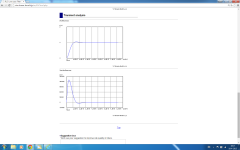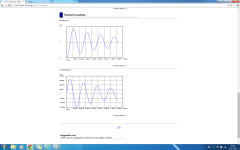Source... BuffaloII or Subbu dac and or USBMonica+mojoII., driven from a waveIO fed from foobar.
Weiner fed directly from Subbu's dac at this time.
No volume control at this time except from the PC's foobar volume control.
Weiner is propably going through its breaking period so will wait till it settles in a bit.
Weiner fed directly from Subbu's dac at this time.
No volume control at this time except from the PC's foobar volume control.
Weiner is propably going through its breaking period so will wait till it settles in a bit.
Last edited:
k. Will try one of my 12au7's pre or others that i have.
Sounds nice!
Then go to 20dB gain, low volume on pre, and digital volume "giver balls".
Then turn up pre and smile.
This is the one I throw in with the thermal/mounting kits:
H48-6G-20-20-4-1A t-Global Technology | 1168-1677-ND | DigiKey
Thrown in, and thrown in. They're actually quite expensive little buggers. About $3 each when bought in large quantities. They're also probably state-of-the-art heat conductor pads and are really second to none in the industry.
I thought I read in the datasheet that the gain setting is registered at boot time and cannot be changed on the fly. Maybe that was for a different IC. Been reading a lot of datasheets these days. But I guess that's basically what you just said. I just assumed the amp has to be powered off before changing them.
Indeed it is so but he wasn't talking about the gain setting switches but the frequency setting switches which can be changed on the fly.
I'd suggest 500khz or 600khz for BD modulation and 1mhz if you use the 1spw mode which I strongly suggest you try (just remember to up the frequency to 1mhz otherwise it won't be as good). This amp has carefully selected output filters with much lower tolerance than bug standard chinese amps which is a requirement for using 1spw mode and exploit the increased SQ potential therein.
Hi,
Running mine for a few days.. Very open sound a lots of power.. 17V laptop supply.. Passive attenuation..
I do hear transient edge ringing..
Since I'm new to this, I did some digging and scanned this article.http://www.irf.com/technical-info/appnotes/an-1071.pdf
It talks about the Parasitics causing transient edge ringing.
Is this inherent or a matter of getting everything together like power supply and preamp etc?
Running mine for a few days.. Very open sound a lots of power.. 17V laptop supply.. Passive attenuation..
I do hear transient edge ringing..
Since I'm new to this, I did some digging and scanned this article.http://www.irf.com/technical-info/appnotes/an-1071.pdf
It talks about the Parasitics causing transient edge ringing.
Is this inherent or a matter of getting everything together like power supply and preamp etc?
The output LC on the 4 ohm wiener is 10uH/1.5uF, which has a 41KHz resonant frequency. Unless your speakers look like a 2uF or bigger capacitor (I seriously doubt it) and effectively lower the corner frequency of the LC, it's not ringing you hear.Hi,
Running mine for a few days.. Very open sound a lots of power.. 17V laptop supply.. Passive attenuation..
I do hear transient edge ringing..
Since I'm new to this, I did some digging and scanned this article.http://www.irf.com/technical-info/appnotes/an-1071.pdf
It talks about the Parasitics causing transient edge ringing.
Is this inherent or a matter of getting everything together like power supply and preamp etc?
You might be hearing HF peaking, caused by your speakers being >4 ohms at high frequencies - what are you using for speakers?
Oh, I don't disagree that the output LC rings with a larger value of R. But the frequency of the ringing is going to be the LC natural frequency, which is >40KHz and inaudible.
Potentially HF content at >20KHz could intermodulate with that 41KHz ring and create new content below 20KHz, but the LC filter on the wiener is pretty close to ideal (negligible L droop vs current, no C change vs voltage) so that effect should be insignificant.
Potentially HF content at >20KHz could intermodulate with that 41KHz ring and create new content below 20KHz, but the LC filter on the wiener is pretty close to ideal (negligible L droop vs current, no C change vs voltage) so that effect should be insignificant.
Last edited:
Even if filterfrequency is 100khz you hear a difference, even when simulated/theoretically there is no rise in frequency respons below 20khz. So I thought the Q affected audioband too, maybe not, maybe it is just something folowing from the higherfrequency ringing. Damn, more reading 
How?Even if filterfrequency is 100khz you hear a difference
If filters ringing at superaudible frequencies bother you, you really don't want to look at the step response of your average digital interpolation filter...
irribeo, are you sure you're not experiencing some sort of ringing like the amps without the output snubbers? Also in the TI's papers it says that the snubber should be calculated for each system. Just a tip.. Also shouldn't the ringing you hear change frequency with different switching frequencies or become less noticable when the working frequency is increased??
I thought I heared a difference between under and overdamped filters, but can't be according to gmarsh unless frequencyrespons is affected. So I must hear another part of load interaction maybe???
(I don't have ampboards yet with easy dipswitches for switching frequency, can't really quickly compare same amp with different switchingfrequencies now)
(I don't have ampboards yet with easy dipswitches for switching frequency, can't really quickly compare same amp with different switchingfrequencies now)
Last edited:
Frequency response is affected by the speaker impedance, as it determines the damping factor of the output filter. Too high a speaker Z = underdamped = peaking, too low a speaker Z = overdamped = early roll off.
How much depends on the output filter values selected. Download a copy of Octave and play around with the MATLAB code I posted here, it'll plot the frequency response.
http://www.diyaudio.com/forums/clas...alculation-tpa3116-8-filters.html#post4247123
How much depends on the output filter values selected. Download a copy of Octave and play around with the MATLAB code I posted here, it'll plot the frequency response.
http://www.diyaudio.com/forums/clas...alculation-tpa3116-8-filters.html#post4247123
So with all orders largely done (just have to mail out the last couple packages) it's time to dig into the spare parts.
I have 3 spare 8 ohm cards that are fully built now, using the rev1 PCB (these only take ICE Components inductors). With those built, I'm now out of 15uH inductors.
I have 3 rev2 PCBs built using Sagami 10uH inductors, the output capacitors aren't installed yet so I can set these up for 4 or 6 ohms.
Got the parts to build up 3-4 more boards and 6 sets of Sagami inductors left, and 6 thermal pads left for mounting kits. Got lots of PCBs (probably 50 total between the two revisions), probably a dozen or so uC's, and I think a single TPA chip left.
I'll run through my PM's tomorrow (it's half past midnight here), see who asked first for extras, and start PM-ing people.
I have 3 spare 8 ohm cards that are fully built now, using the rev1 PCB (these only take ICE Components inductors). With those built, I'm now out of 15uH inductors.
I have 3 rev2 PCBs built using Sagami 10uH inductors, the output capacitors aren't installed yet so I can set these up for 4 or 6 ohms.
Got the parts to build up 3-4 more boards and 6 sets of Sagami inductors left, and 6 thermal pads left for mounting kits. Got lots of PCBs (probably 50 total between the two revisions), probably a dozen or so uC's, and I think a single TPA chip left.
I'll run through my PM's tomorrow (it's half past midnight here), see who asked first for extras, and start PM-ing people.
- Home
- Group Buys
- "The Wiener" TPA3118 amplifier card

